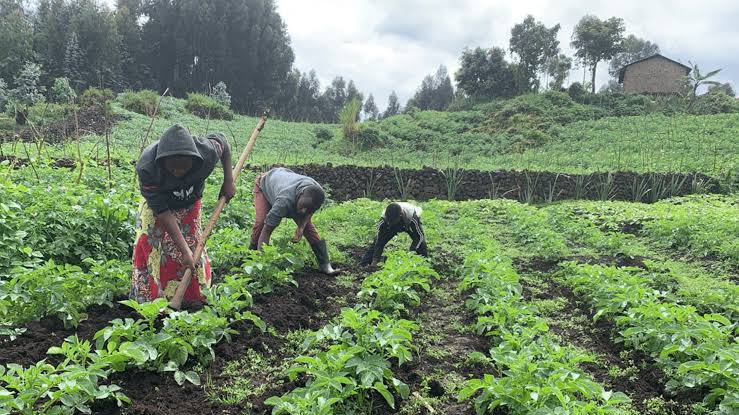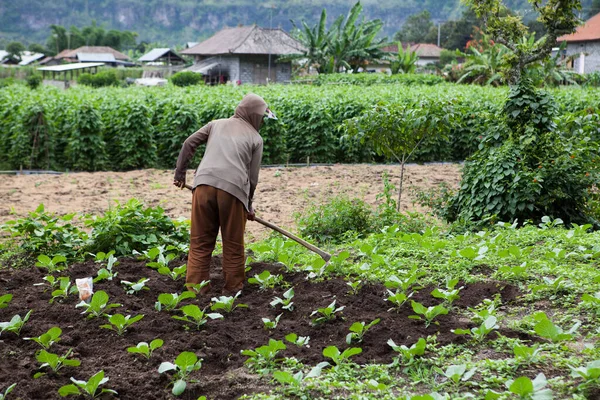Subsistence farming is when people grow food primarily for their own families to eat. In subsistence farming, farmers don’t grow crops or raise animals to sell for money; instead, they focus on producing enough food to feed themselves and their families. This type of farming has been practiced for a very long time, often in small communities or villages.
In subsistence farming, farmers use simple tools like hoes and plows, and they don’t usually have large fields or fancy machines. Families work together to plant and harvest crops, and they rely on the land to provide them with the food they need. This way of farming is different from commercial farming, where the main goal is to make a profit by selling crops or livestock.
One important thing about subsistence farming is that it is often done on a small scale. Families may have a small piece of land where they grow crops like rice, maize, or vegetables. They might also have a few animals, like chickens or goats, for additional food sources. Because subsistence farmers depend on what they can produce themselves, they often have a deep connection to the land and a strong understanding of the local environment.
Weather and seasons play a big role in subsistence farming. Farmers need to know when the rainy season starts and when it ends, as this affects when they plant and harvest their crops. If the weather is not favorable, it can make it harder for them to grow enough food. This reliance on nature makes subsistence farming a challenging but essential way of life for many people around the world.
Subsistence farming is not just about growing food; it’s also about survival. Families depend on the success of their crops and animals to have enough to eat throughout the year. It’s a way of life that requires hard work, knowledge of the land, and a strong sense of community.
In some parts of the world, subsistence farming is still the main way people feed themselves. It’s a traditional practice that has been passed down through generations. However, it also faces challenges, such as changes in climate, access to resources, and economic pressures.
Despite its challenges, subsistence farming has its advantages. It promotes self-sufficiency, as families are not reliant on external markets for their food. It also helps preserve local traditions and knowledge about farming practices. While it may not generate income, it ensures that families have a reliable source of nutrition.
In addition, subsistence farming is a vital way of life for many people. It is a simple, traditional form of agriculture where families work together to grow the food they need to survive. While facing challenges, this practice remains deeply rooted in communities worldwide, embodying a connection to the land and a commitment to sustaining life.
Read Also: How to Extract and Package Snail Slime (Snail filtrate) for Commercial Use
Techniques Used in Subsistence Farming

In subsistence farming, people use various techniques to grow and harvest crops for their families. These techniques are often traditional and adapted to the local environment. Here are some common techniques employed in subsistence farming:
1. Crop Rotation: Subsistence farmers often practice crop rotation to maintain soil fertility. They grow different crops in a specific sequence on the same piece of land, allowing the soil to recover and preventing the depletion of nutrients.
2. Intercropping: Farmers plant different crops together in the same field. This technique helps maximize the use of available space, provides biodiversity, and reduces the risk of crop failure if one type of crop is affected by pests or diseases.
3. Rainwater Harvesting: Many subsistence farmers rely on rainfed agriculture. They collect and store rainwater during the rainy season to ensure a water supply during dry periods. This is crucial for sustaining crops and supporting livestock.
4. Organic Farming Practices: Subsistence farmers often use organic methods, avoiding synthetic fertilizers and pesticides. They may use natural compost, crop residues, and animal manure to enrich the soil and promote healthy plant growth.
5. Traditional Irrigation: In areas where rain is insufficient, subsistence farmers develop simple irrigation systems. They may divert water from rivers or construct small channels to ensure their crops receive enough water for optimal growth.
6. Seed Saving: Rather than buying seeds each season, subsistence farmers save seeds from their harvest to plant in the next growing season. This sustainable practice helps preserve local crop varieties and reduces the need for purchasing seeds.
7. Agroforestry: Integrating trees into farming systems is a common practice in subsistence agriculture. Trees provide shade, prevent soil erosion, and may offer additional products like fruits or wood, contributing to the overall resilience of the farm.
8. Traditional Knowledge Sharing: Subsistence farming often relies on the transmission of knowledge from generation to generation. Elders in the community share valuable insights on planting times, weather patterns, and natural remedies for crop diseases.
9. Hand Tools: Subsistence farmers typically use basic hand tools such as hoes, machetes, and plows. These tools are simple, easy to maintain, and well-suited for small-scale farming.
10. Community Collaboration: In subsistence farming, communities often work together during planting and harvesting seasons. This collaborative effort allows for the efficient use of labor and resources, fostering a sense of shared responsibility.
These techniques showcase the resourcefulness and adaptability of subsistence farmers who rely on a combination of traditional wisdom and practical approaches to ensure the success of their agricultural practices.
Read Also: Snail Farming Step-by-Step Beginners Guide
Benefits of Subsistence Farming

Subsistence farming brings several benefits to individuals and communities, contributing to their livelihoods and overall well-being. Here are some key benefits associated with subsistence farming:
1. Food Security: The primary benefit of subsistence farming is ensuring a consistent and reliable source of food for families. By growing their own crops and raising livestock, subsistence farmers reduce dependency on external food markets, increasing their resilience to food shortages.
2. Self-Sufficiency: Subsistence farming promotes self-sufficiency as families produce the food they need for daily life. This reduces reliance on external sources and provides a sense of control over one’s basic needs.
3. Preservation of Traditional Practices: Subsistence farming often involves the preservation of traditional agricultural techniques and knowledge. This passing down of wisdom from generation to generation helps maintain cultural identity and sustainable farming practices.
4. Community Cohesion: In subsistence farming communities, there is often a strong sense of community. Members work together during planting and harvesting seasons, fostering social bonds and mutual support. This collective effort contributes to a shared sense of responsibility for the well-being of the community.
5. Local Biodiversity: Subsistence farmers often grow a variety of crops and may keep diverse livestock. This diversity contributes to local biodiversity, ensuring a range of plant and animal species that can adapt to different environmental conditions.
6. Environmental Sustainability: Many subsistence farmers practice sustainable agriculture by avoiding the use of synthetic fertilizers and pesticides. This helps maintain soil health, reduces environmental impact, and promotes long-term sustainability.
7. Resilience to Market Fluctuations: Subsistence farmers are less vulnerable to market fluctuations and price variations. Since they primarily grow food for personal consumption, they are not as affected by changes in market prices or disruptions in the supply chain.
8. Adaptability to Local Conditions: Subsistence farming is often tailored to local climates and conditions. Farmers adapt their practices to the specific needs of their land, considering factors like soil type, rainfall patterns, and temperature variations.
9. Economic Stability: While subsistence farming may not generate income in the traditional sense, it provides economic stability by meeting basic needs. Families can save money by producing their own food, which can be especially crucial in areas with limited economic opportunities.
10. Cultural Heritage: Subsistence farming is deeply embedded in the cultural heritage of many communities. It reflects traditions, rituals, and a way of life that has been passed down through generations, contributing to the rich tapestry of local cultures.
In summary, subsistence farming plays a vital role in ensuring food security, preserving cultural heritage, and fostering community resilience. While it may not align with modern commercial agriculture, its benefits extend beyond immediate sustenance, encompassing social, cultural, and environmental dimensions.
Read Also: Meaning, Types and Factors of Production
